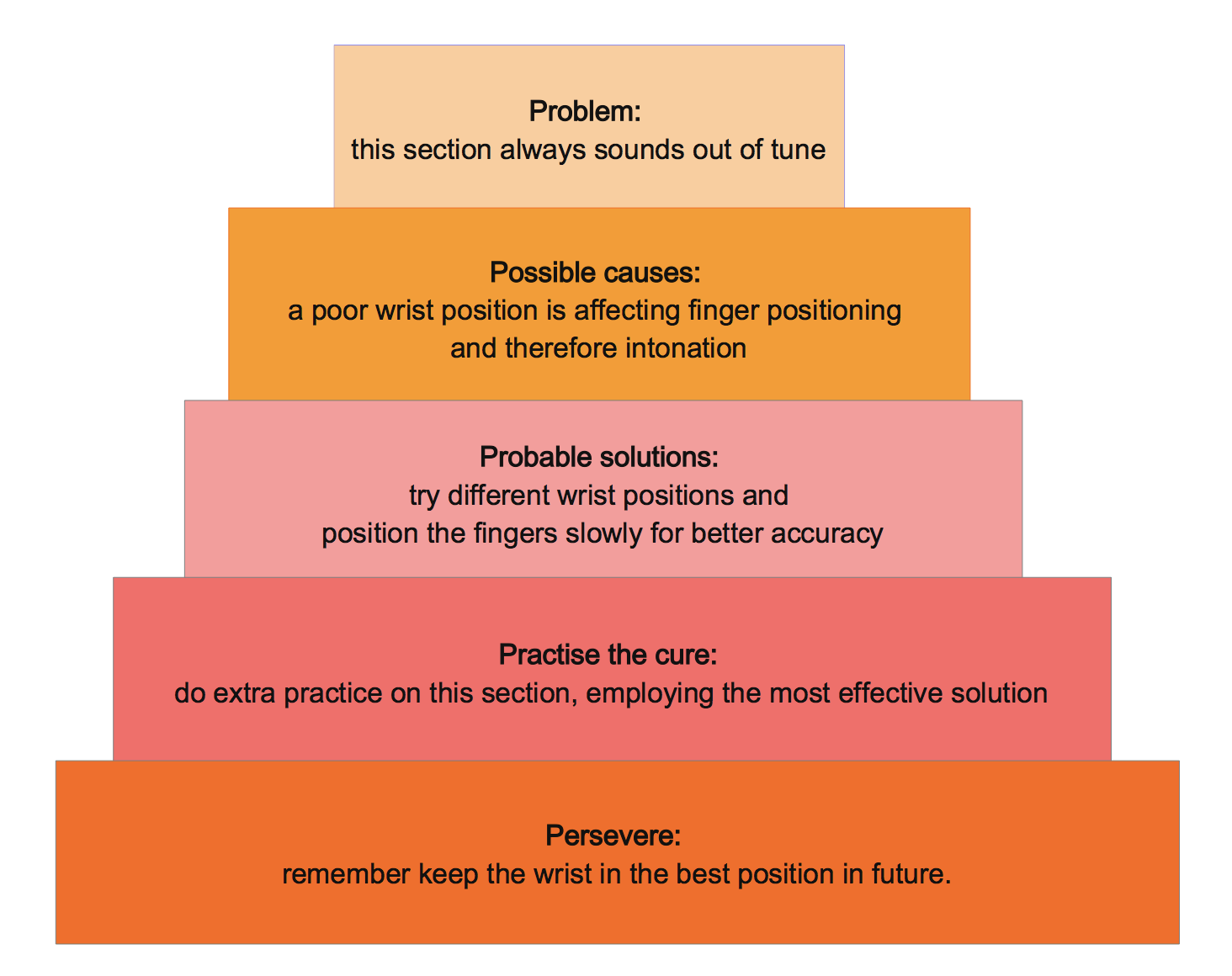Good Practice Techniques for Graded Examinations – Part II

The first of these articles discussed the need for practice to be relevant in terms of fluency and accuracy, musical detail, style and character. This article explains how to practise mindfully.
How to practise
Practice should be mindful, with clear objectives that take account of what needs to be learned and practised at each point in the schedule. Mindful learning of a new piece or song avoids mistakes by first listening to it attentively, studying the score and then playing or singing short sections slowly enough to ensure correct rhythms, articulation and notes, including intonation. Should problems arise, such as a section that always sounds out of tune, these may be isolated and resolved using a problem-solving approach. Here’s a possible scenario for a violinist:

Prepare for the unexpected
Another useful practice strategy is to prepare for occasional lapses in accuracy or concentration by practising starting a piece or song at any random point, not just from the beginning. Being able to begin at any bar will help with keeping the fluency even if slips are made. Singers who are performing from memory need to plan what to do if they momentarily forget the words – it’s best to make them up until memory returns!
Supporting test practice
Many students practise scales by beginning with the ascending pattern; they make a mistake descending, then start again only to repeat the error. A mindful strategy would be to begin with the descending pattern, work out the cause of the problem, then resolve it. In addition to accuracy, scales need to be practised with a confident tone, precise intonation (where applicable) and musically shaped phrasing, building up to an appropriate pace.
Teachers need clear, detailed strategies for teaching sight reading, including helping their students to practise at home. Sight reading is like speed-learning and practising sight reading mindfully involves analysing the music first and imagining how it should sound. After attempting a sight reading example, it is important to self-assess, considering how fluent and rhythmical the attempt was and whether the notes generally sounded right. Sight reading resources offering a recording that demonstrates the correct interpretation of the score are the most helpful ones.
Practising with an accompanist
Singers and some instrumentalists will be performing with an accompanist and this too needs to be practised ahead of the examination, ideally more than once. Some teachers accompany their own candidates and others use a professional accompanist, in which case it’s vital to make sure the accompanist has the date firmly in their diary – it has been known for a candidate to arrive at the centre with no accompanist! The soloist candidate needs to lead the performance confidently in tempo and one of the purposes of rehearsals is to agree on the speed. It’s also important to plan the textural balance for any sections where the accompanist takes a ‘solo’ role and the candidate’s line is quieter, and to rehearse entries after any piano-only phrases. The piano in this video is obviously played by a sensitive, experienced accompanist.
Part 3 in this series will explore practice strategies that help with performing pieces well on the big day.





